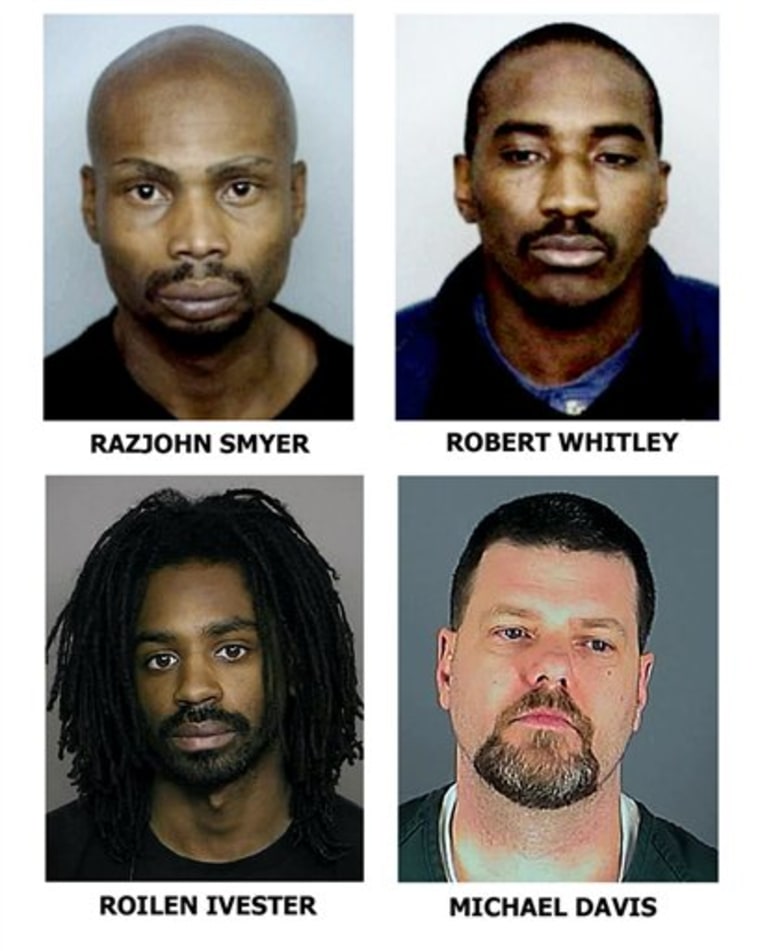The burglar was undone by his taste for strawberry soda.
RazJohn Smyer, a suspect in a string of Denver-area break-ins, often checked his victims' refrigerators and helped himself to a drink. The soda cans he left behind gave police enough DNA evidence to link him to five burglaries. He's now serving a 20-year sentence.
Smyer's conviction is just one example of how DNA evidence is increasingly being used to solve everyday property crimes across the nation. Once reserved mostly for violent cases such as rape and murder, genetic testing is now much cheaper and faster than when the technology was new.
"Regular watchers of CSI may be led to believe that this technology is already being used in this way, but it's really brand-new," said John Roman of the Urban Institute, lead author of a study on the issue. "This really is the start of a revolution in policing."
The evidence can include almost any biological material left at a crime scene: saliva taken from food, skin cells from the steering wheel of a stolen car, drops of blood from a thief who got cut on a window pane.
By using DNA, authorities are five times more likely to identify a suspect than with fingerprints alone. DNA also doubles the number of suspects who are identified, arrested and prosecuted, according to the study, which was funded by the National Institute of Justice.
Burglars identified with DNA evidence in Denver usually plead guilty because prosecutors "have very solid evidence," said Denver District Attorney Mitch Morrissey.
For many years, the high cost of DNA tests and the long wait for results made it difficult for authorities to use the technology in property crimes.
But genetic testing has come a long way since 1989, when investigators needed a blood sample about the size of a half dollar or a seminal fluid stain the size of a dime to perform an accurate analysis, which took about 10 weeks and cost $1,000.
"It was great for the prosecution, but it wasn't good for the investigation," recalled Paul Ferrara, who recently retired as director of Virginia's state crime lab and developed the nation's first DNA databank.
"My only surprise today is that it's been this long in coming."
Analysis on some cases now takes as little as 12 hours and costs only about $50.
Police in New York City and Chicago use DNA testing routinely. Other agencies, such as the Los Angeles Police Department, still reserve it for the most serious crimes. Police in Great Britain began using DNA for property crimes in 2001.
In Denver, detectives linked a suspect to five burglaries after he left saliva on a piece of "gold coin" candy. The man, who was on parole when he committed the burglaries, is now serving a 48-year sentence.
Another thief was arrested after detectives found his DNA on a tuna sandwich. In a different case, investigators were even able to extract DNA from part of a lollipop left at a crime scene.
Once genetic material is analyzed, a profile is developed and compared with state databases or entered into the FBI's Combined DNA Index System, which contains 6 million offender profiles and more than 225,000 pieces of evidence awaiting a match.
"We've been able to link DNA to what were totally unsolved, closed cases," said Lt. Kip Lowe of the Topeka Police Department in Kansas. "And when that DNA was submitted, that information funneled back to us and, boom, we identified the suspect."
The National Institute of Justice found that processing a scene for DNA evidence, following up on leads and eventually identifying a suspect adds about $4,502 to the cost of a property crimes investigation.
That expense has paid off in Denver, where the average sentence in property crime cases using DNA evidence jumped to 14 years, compared with 1 1/2 years for those without DNA. Part of the reason: Suspects identified in the DNA database are habitual offenders and can be linked to more than one crime, Morrissey said.
He estimated that Denver saved more than $500,000 in stolen property and police time between November 2005 and July 2007 by removing repeat offenders from the streets.
Many of the worst offenders commit hundreds of property crimes in a year — sometimes as many as four or five in a single day, Morrissey said.
Los Angeles police Commander Harlan Ward said grant money from the Urban Institute study allowed his department to conduct DNA tests in several cases, including one involving a man who had 35 previous felony arrests. But once the study ended, the department restricted DNA use to violent crimes.
Property crimes such as burglary, theft and auto theft cost Americans an estimated $17.6 billion in 2007, according to the FBI.
"The issue is one of capacity," said Barry Fisher, director of the Los Angeles County Sheriff's Department crime lab and past president of the American Society of Crime Lab Directors.
"The federal government doesn't pay for the bulk of crime labs. That comes from general funds that are approved by city councils, board of commissions, legislatures. We need to be able to answer, 'What is the value in doing this?' We're just now starting to get a hint with these studies."
Some police agencies, including the Chicago Police Department, rely on state and county crime labs to process DNA samples, which can take months. For example, at the Miami-Dade County crime lab, scientists process evidence from at least 35 agencies.
"You can send over a thousand samples, and the property crimes would take less priority (than a violent crime), and rightfully so," said Miami Police Chief John Timoney.
In the Denver suburb of Aurora, Police Chief Dan Oates is considering hiring an analyst to work with the Colorado Bureau of Investigation state crime lab.
"In the end, whether it's cost effective will be irrelevant," Oates said. "Police will demand it. Prosecutors will demand it. Defense attorneys will demand it. Juries will demand it."
